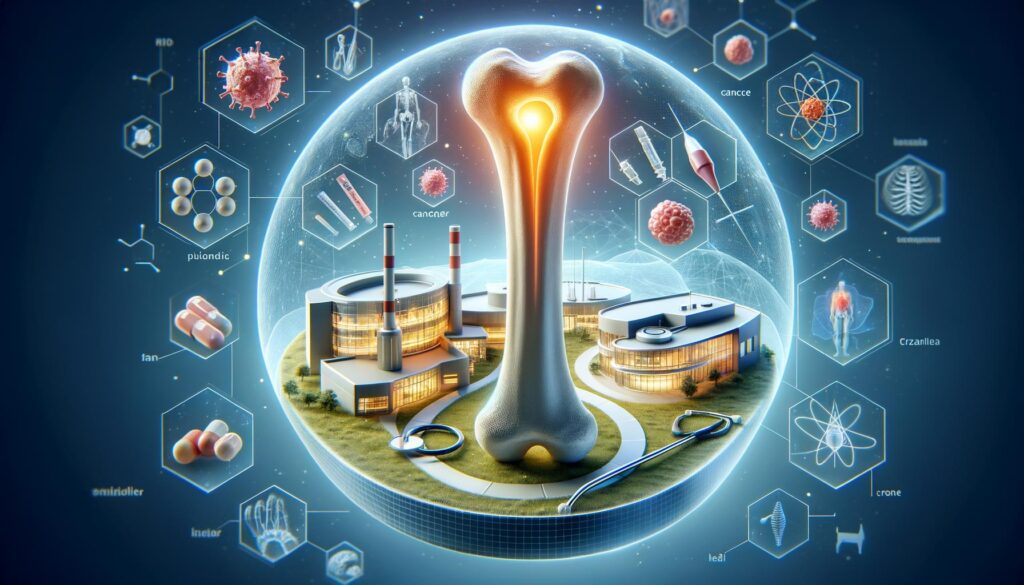Exploring Treatment Options for Bone Cancer

Understanding Bone Cancer
Bone cancer, though relatively rare, is a serious condition characterized by the abnormal growth of cells within the bones. These cancerous growths can be primary, originating in the bone itself, or secondary, resulting from metastasis of cancer from other body parts. The most common types of primary bone cancer include osteosarcoma, chondrosarcoma, and Ewing’s sarcoma. Understanding the type of bone cancer is crucial as it influences the treatment approach. Physicians rely on imaging tests such as X-rays, MRIs, and CT scans, accompanied by biopsy procedures to diagnose and understand the specific characteristics of the cancer.
Treatment Options: Surgery and Radiation
The cornerstone of bone cancer treatment is surgical intervention. Surgery aims to remove the cancerous tissue while preserving as much of the healthy bone and surrounding tissue as possible. In severe cases, amputation might be necessary, but limb-sparing surgeries have become increasingly successful due to advancements in medical technology. Additionally, radiation therapy is frequently employed either standalone or in conjunction with surgery. Radiation therapy uses high-energy rays to target and destroy cancer cells and can be especially useful in scenarios where surgery might pose significant risks.
Chemotherapy in Bone Cancer
Chemotherapy is another vital component in the treatment arsenal against bone cancer. This method involves using drugs to kill cancer cells, administered either orally or intravenously. Chemotherapy can be effective in shrinking tumors before surgery or eliminating any remaining cancer cells post-surgery. Though chemotherapy can come with side effects such as nausea, hair loss, and fatigue, ongoing research and development are focused on minimizing these impacts. Increasingly, personalized chemotherapy regimens are being developed to target specific cancer cell types, thereby potentially reducing side effects and improving efficacy.
Emerging Therapies and Research
Innovative therapies are continuously emerging in the fight against bone cancer, providing new hope to patients. Targeted therapy, which involves drugs designed to specifically attack cancer cells without harming normal cells, is among these promising developments. Additionally, immunotherapy, which harnesses the body’s immune system to fight off cancer cells, has shown potential, especially in recurrent cancer cases. Researchers are also investigating the efficacy of novel approaches such as gene therapy and the use of bone marrow stem cells to regenerate bone tissue and combat cancerous growths.
Managing Life with Bone Cancer
While medical treatments are vital, managing life with bone cancer involves a comprehensive approach that includes physical, emotional, and psychological support. Physical therapy is crucial for maintaining mobility and strength, particularly following surgical interventions. Psychological support from counselors or support groups can aid in handling the emotional stress associated with a cancer diagnosis. Moreover, dietary and lifestyle changes can support overall health and improve treatment outcomes. Nutritional guidance is often provided to help patients maintain strength and resilience throughout the treatment journey.
Conclusion
The range of treatments available for bone cancer has expanded significantly, providing patients with better chances of managing their condition effectively. As research and technology continue to evolve, treatments are becoming more personalized and effective, improving prognosis and quality of life for those affected by this disease. Staying informed and working closely with healthcare professionals can empower patients and their families to navigate this challenging journey with confidence and hope.
